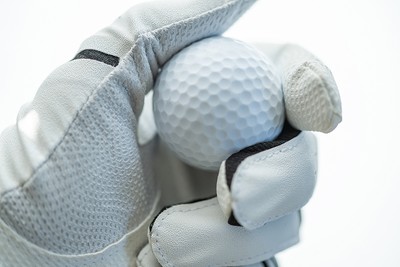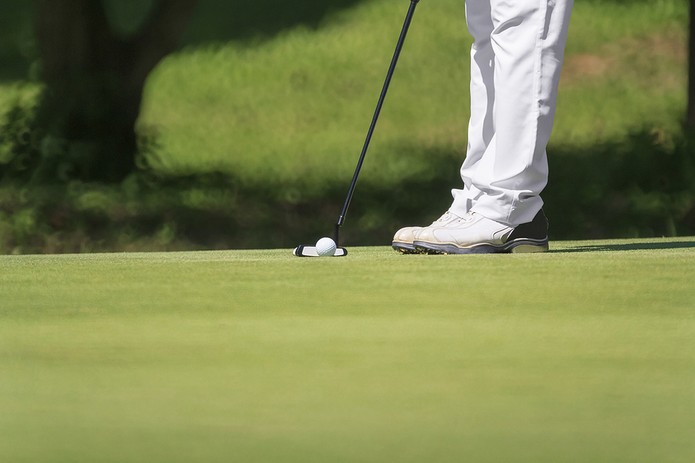 A number of golf’s key organisational bodies have come together in a bid to ‘fix’ their sport and prevent it being overpowered by modern equipment.
A number of golf’s key organisational bodies have come together in a bid to ‘fix’ their sport and prevent it being overpowered by modern equipment.
The R&A and the USGA, who oversee the Open Championship and U.S. Open respectively, want to ‘rollback’ the manufacturing of golf balls to try and bring an end to gym-honed players overpowering courses that were, in some cases, built more than a century ago.
They don’t want to see the way in which drivers are and other clubs are made changed, however, and instead will focus on creating a ball that does not travel such extensive distances.
Indeed, their early tests suggests as much as 15 yards could be shaved off the average drive.
After green lighting a new type of golf ball, the sport’s regulators will then implement a Model Local Rule (MLR), which will allow tournament organisers on the PGA TOUR and golf’s other main tours to decide whether they want to use the new ball or stick with the old ones.
The R&A’s Martin Slumbers said:
“We strongly feel we have crossed the rubicon on distance and that we had to do something. Doing nothing is not an option and would be completely irresponsible of us.”
Officials hope the changes will be introduced in time for the 2026 season.
Too Far Gone

Golf is a sport obsessed with statistics, and one of those metrics – driving distance – reveals just how much golf has changed in recent years.
In 1993, John Daly topped the PGA TOUR’s driving distance stat with an average tee shot length of 288 yards. Fast forward to 2023 and Rory McIlroy leads the way with an average of 326 yards.
You might not think that’s a problem – it’s fun to see the ball being hit a long way, but there are genuine ramifications for the competitiveness of golf at the top level. Famous courses like St Andrews, which was built in the fifteenth century, and Augusta National (opened in 1932) simply cannot cope with such blistering power, with winning scores getting lower with each passing year.
Officials at Augusta have been forced to extend holes by as much as 35 yards ahead of the 2023 edition of The Masters, and while that’s fine for courses that have extra room to work with, others simply don’t have such a luxury available to them. Another concern for lengthened courses is the amount of water required to keep them in pristine condition in an age of enlightenment about sustainability issues.
It’s thought that players and manufacturers had vetoed plans to modify the design of drivers, and so instead the sport’s governors will instead look to change the ergonomics of the humble golf ball in a bid to retain the sport’s competitiveness.
According to research, a new ball could see driving distances fall by up to 15 yards – even accounting for the innovations in club design and increase in clubhead speed as the top pros swing harder and harder.
Some golf courses remain difficult to play. The PGA TOUR’s Valspar Championship, for example, is played at the Copper head Course at the Innisbrook club in Florida. The architecture there features dense tree-lines and doglegging fairways, which prevents huge drives (more often than not) and leaves players with the tricky task of hitting 200-yard approach shots into small greens.
But elsewhere, players are driving the green on Par 4 holes – such as at the 2022 Open Championship at St Andrews. And at the top level, that rather negates the skill and nuance of the sport.
Are Golfers Better Today?

It’s an argument that can be deployed in many sports: are the players of today better than their counterparts of yesteryear?
Modern equipment, a greater understanding of nutrition and physical conditioning, more prize money….these could all be factors that lend weight to the argument that golfers today are simply better.
If the average player is driving the ball 30-40 yards further than yesteryear, then it goes without saying that they are closer to the green when hitting their approaches. That means they can take clubs with more loft on them, which creates better control, spin and a higher trajectory – making it easier to hold fast and/or contoured greens.
In golf, size really does matter.
But does power necessarily breed skill? Scottie Scheffler, the world number one, leads the PGA TOUR for the Greens in Regulation stat in 2023. That measures, in essence, how often a player sets themself up with a birdie putt.
Scheffler has found 73.77% of GIR in the 2022/23 season. In 1993, Fuzzy Zoeller led the way with a GIR success rate of 73.63%.
Perhaps the greens run faster these days, and it would be churlish to suggest that Zoeller possesses the same ability as Scheffler does now. But he did pretty much the same GIR-wise with far less power.
Another rudimentary stat in golf is Scoring Average, and in 2023 it’s Jon Rahm that leads the way with an average of 68.90. In 1993, Greg Norman was the top dog with 68.89.
So are the golfers of today better? Perhaps, although some basic measures of prowess would suggest otherwise.